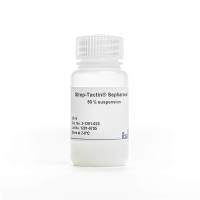Purification of Calpain by Affinity Chromatography on Reactive Red-Agarose or on Casein-Sepharose
互联网
866
There is no single affinity chromatography method that is universally effective for the purification of calpains. Dye affinity chromatography and calcium-dependent binding to immobilized substrates or inhibitors are the most commonly attempted affinity methods. Our laboratory has used Reactive Red-agarose in the purification of m-and μ-calpain from bovine heart and other tissues for many years (1 ,2 ). However, this method has not achieved widespread use due to reported variability in outcomes. The procedure provided below has proven to be highly reproducible. It is particularly effective for the purification of m-calpain, although it is also useful for μ-calpain. Others have described the use of Blue Sepharose-CL-6B for the purification of both m-and μ-calpain, requiring the use of 1 M urea in the elution buffers (3 ). Our unpublished attempts to use this type of resin were not reproducibly successful, and this method will not be discussed further here. Calcium-dependent binding of calpain either to immobilized substrates, like casein-Sepharose (4 ,5 ), or to the inhibitor calpastatin (6 ), is highly selective but has the inherent risk that autoproteolysis may alter the calpain while it is being purified. Inactivation of calpain through mutation (7 ) or with covalent inhibitors (8 ) can be used to avoid autoproteolysis, although the uses for the purified inactive calpain are more limited.








